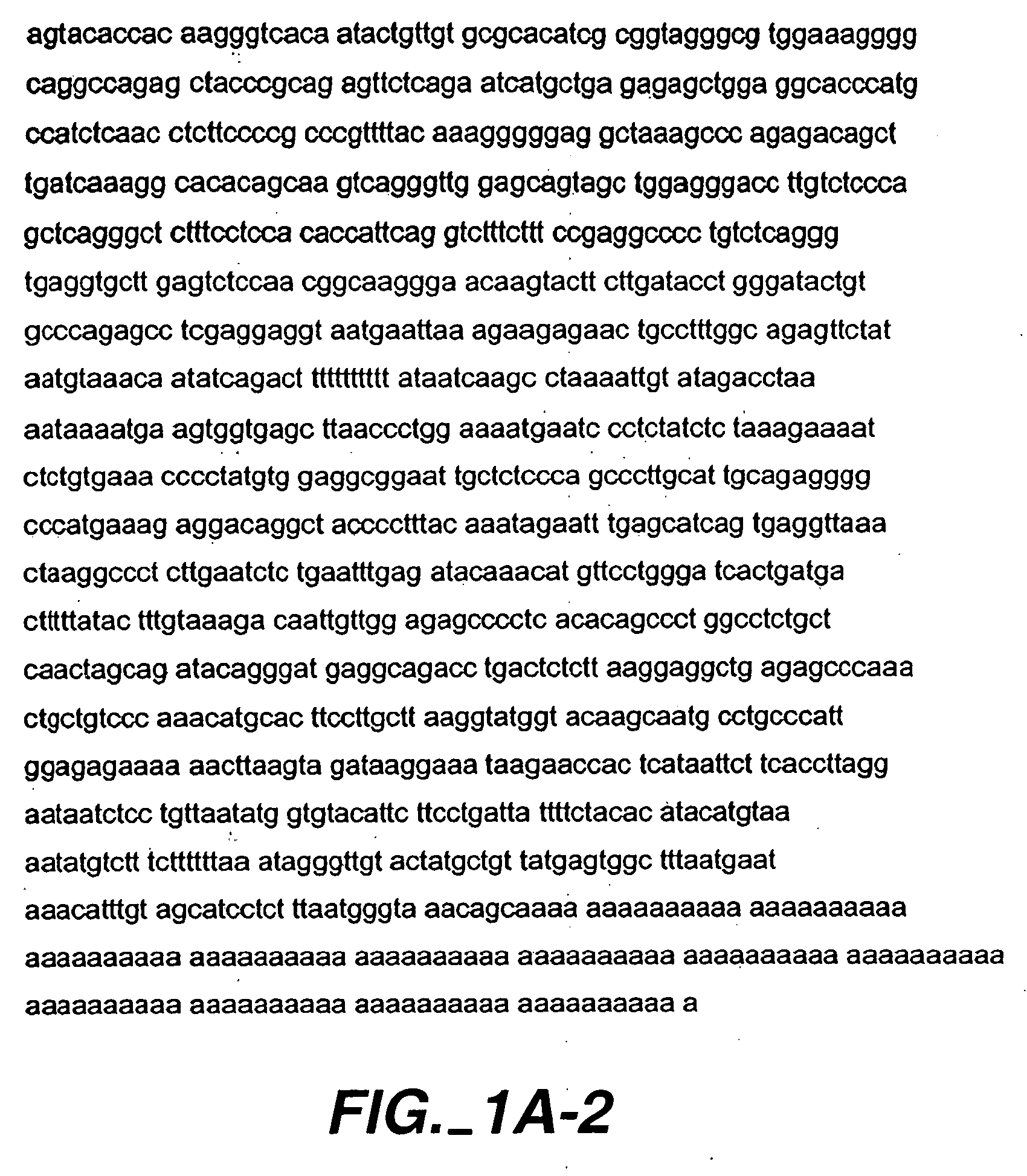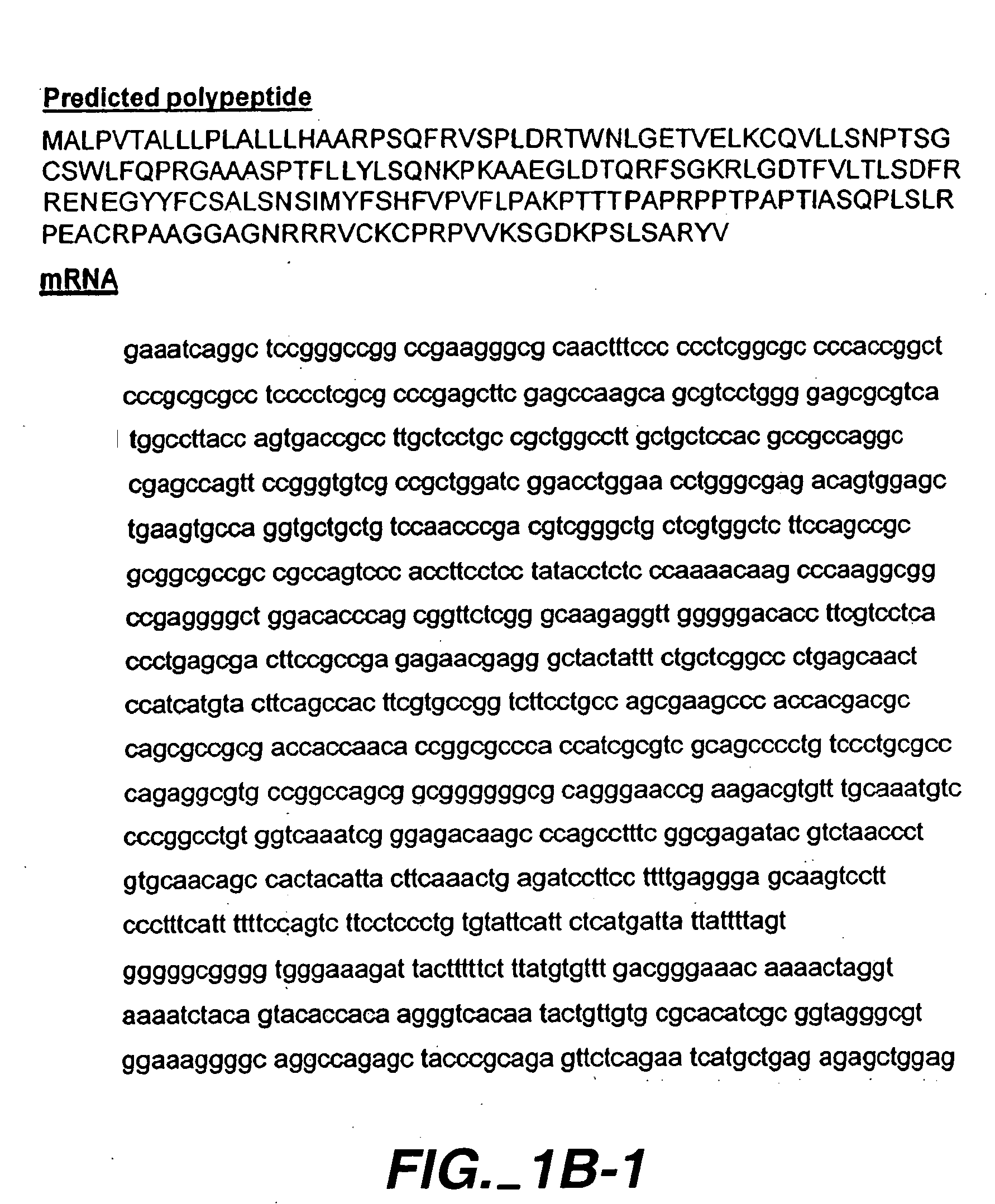Specific inhibition of allorejection
a technology of alloimmune response and specific inhibition, which is applied in the field of immunosuppressive therapy, can solve the problems of limited use of such allografts, graft rejection and/or graft versus host, and the risk of infection for the recipient, so as to prolong the survival of an allograft in the recipient. , the effect of prolonging the survival of an allogra
- Summary
- Abstract
- Description
- Claims
- Application Information
AI Technical Summary
Benefits of technology
Problems solved by technology
Method used
Image
Examples
example 1
The Veto Effect—STUDIES WITH VECTORS
[0176] a. The Use of Plasmid Expression Vectors to Engineer Fibroblasts as Veto Cells
[0177] Fibroblasts were engineered to express either human or mouse CD8 α-chain on their surface. Fibroblasts were transfected with the pCMVhCD8α plasmid or pCMVmCD8α plasmid in which expression of the CD8 α-chain is driven by the CMV immediate early promotor / enhancer (Invitrogen). When the CD8 α-chain transfected fibroblasts (H-2b) were added to mixed lymphocyte cultures (Balb / c; H-2d anti-C57BL / 6; H-2b), only the CD8 α-chain expressing line suppressed CTL responses. As depicted in FIGS. 3A and B, the addition of MC57T fibroblasts expressing either the mouse or human CD8 α-chain completely suppressed the induction of CTLs. In contrast, the addition of non-transfected fibroblasts did not affect T-lymphocyte activation. In addition to establishing the inhibitory function of a CD8 α-chain, these experiments also demonstrated that mouse T-lymphocytes could be veto-...
example 2
In vitro Inhibition Studies—Mixed Lymphocyte Cultures
[0198] Spleen cells were harvested from Balb / c (H-2d) and C57BL / 6 (H-2b) mice. Single cell suspensions were prepared. The C57BL / 6 spleen cells were irradiated with 3,000 rad (Mark 1 Cesium Irradiator). 4×106 Balb / c spleen cells (responder / effector cells) were cultured together with 4×106 irradiated C57BL / 6 spleen cells (stimulator cells) per well in 24-well plates (TPP, Midwest Scientific, Inc.) in IMDM (Sigma) that contained 10% fetal calf serum (FCS) (Sigma), HEPES, penicillin G, streptomycin sulfate, gentamycine sulfate, L-glutamine, 2-mercaptoethanol, non-essential amino acids (Sigma), sodium pyruvate and sodium bicarbonate (modified IMDM). After 5 days of culture in a CO2 incubator (Forma Scientific), the cultures were harvested in their entirety and tested for the ability to lyse C57BL / 6-derived target cells (H-2b).
[0199] To some of these cultures 4×105 MC57T fibroblasts (H-2d) were added that had been irradiated with 12,0...
example 3
Engineered Veto in Animal Models
[0213] Prior to the transplantation studies, we investigated how animals responded to the injection of large doses of the mAdCD8. In the first set of experiments, Balb / c mice (two mice in each group) were injected i.v. with equivalent doses of mAdCD8 or an Adenoviral control vector coding for β-galactosidase (AdLacZ). After seven days the animals were sacrificed. Their spleen cells were cultured in the presence of AdLacZ for five days. They were then tested for their ability to lyse AdLacZ-infected target cells (P815, Balb / c-derived). As depicted in FIG. 13, CTLs with specific lytic ability could be expanded from Balb / c mice that had been immunized with AdLacZ, but not from mice that had received the mAdCD8. This result suggested that AdCD8 did not induce immune responses to Adenoviral antigens due to the expression of the CD8 α-chain.
[0214] In a second set-up, C57Bl / 6 mice were immunized with equivalent doses of mAdCD8 (2 mice) or AdLacZ (2 mice). ...
PUM
| Property | Measurement | Unit |
|---|---|---|
| diameter | aaaaa | aaaaa |
| time | aaaaa | aaaaa |
| time | aaaaa | aaaaa |
Abstract
Description
Claims
Application Information
 Login to View More
Login to View More - R&D
- Intellectual Property
- Life Sciences
- Materials
- Tech Scout
- Unparalleled Data Quality
- Higher Quality Content
- 60% Fewer Hallucinations
Browse by: Latest US Patents, China's latest patents, Technical Efficacy Thesaurus, Application Domain, Technology Topic, Popular Technical Reports.
© 2025 PatSnap. All rights reserved.Legal|Privacy policy|Modern Slavery Act Transparency Statement|Sitemap|About US| Contact US: help@patsnap.com



